Most founders don't wake up thinking about audits or compliance frameworks. But sooner or later, a client or investor will ask, "Can you prove your controls actually work?" That's when things get complicated.
Over the years, AuditBoard has become the go-to name for untangling that mess. What started as a simple SOX tool now powers audit, risk, and compliance operations for more than half of the Fortune 500. Even the AuditBoard logo feels like a quiet signal of "we've got our house in order."
Still, questions remain. Many glowing AuditBoard reviews exist online, but they don't always reveal what it's like to actually use the platform. Is it as smooth as it looks? And how powerful is its compliance automation in practice?
This review dives into what AuditBoard really does, how much it costs, and whether it's the right fit for your company in 2025.
And if you'd rather skip the guesswork and see what smarter automation looks like in real life, you can always talk to the founders or book a demo at ComplyJet. They've helped teams go from first-audit panic to enterprise-level compliance in record time.

What is AuditBoard?
AuditBoard began as a side project between two friends - Daniel Kim and Jay Lee. One was an auditor frustrated with spreadsheets. The other, a private equity professional, saw how much time and money were lost in messy risk processes. Together, they built a fix.
Their first product, Soxhub, helped companies manage SOX compliance. It evolved into AuditBoard, a full-scale GRC platform used by more than half of the Fortune 500. The AuditBoard logo is now familiar in Gartner reports and corporate trust decks.
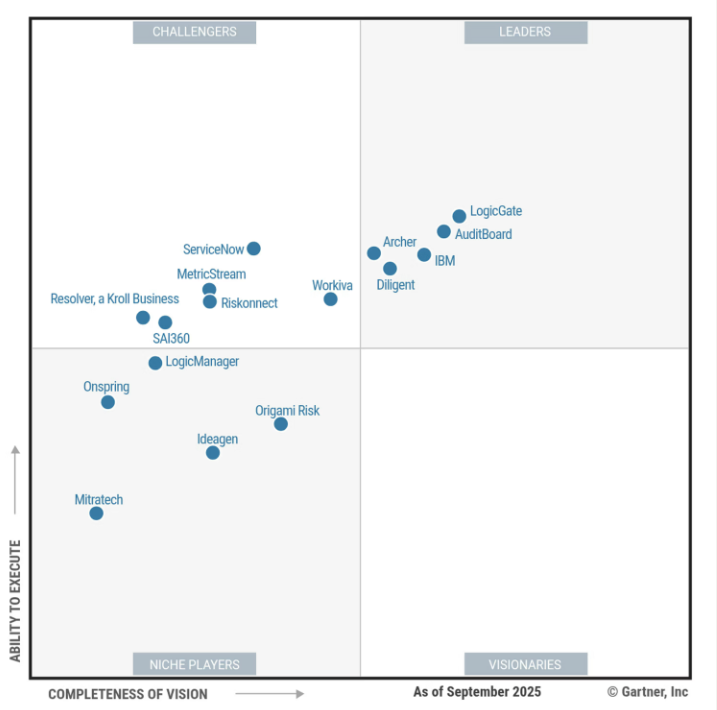
Backed by Battery Ventures and led by CEO Scott Arnold, AuditBoard scaled fast - hundreds of employees, thousands of enterprise users, and recognition as a Leader in Gartner's 2025 Magic Quadrant™ for GRC Tools.
Of course, that kind of scale comes at a price. AuditBoard pricing isn't public, but industry data places it between $30,000 and $80,000 a year depending on setup. Add the average SOC 2 compliance cost - which can run tens of thousands more - and it's clear AuditBoard is built for organizations ready to invest in control and structure.
Key AuditBoard Features
AuditBoard is more than a tool - it's an ecosystem connecting audits, risks, compliance, and infosec in one workspace.
In short: AuditBoard gives large teams one connected space to manage everything - from internal audits to third party risk management - without juggling separate tools.
AuditBoard AI Capabilities and Intelligent Automation

AuditBoard takes automation further with AI built into every layer of compliance.
- AuditBoard AI: Drafts policies, summarizes findings, and suggests fixes using domain-trained generative AI.
- Evidence Collection: Pulls data on schedule from connected systems - no more chasing screenshots.
- Intelligent Testing: Runs continuous control tests and flags exceptions instantly.
- AuditBoard Sync: Keeps every AI-driven update - like new risks or controls - synced across modules.
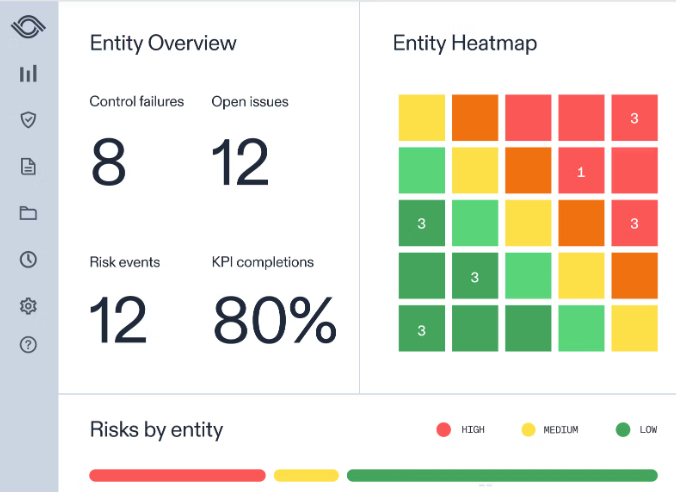
- Framework Mapping: Detects overlaps between frameworks (SOC 2, ISO 27001, NIST) so teams test once and reuse proof.
- AI Governance: All AI actions are traceable and reviewed. Customer data is never used to train models.
- Reporting Assist: Turns complex audit data into ready-to-present summaries.
- Continuous Auditing: Transforms yearly audits into ongoing monitoring cycles.
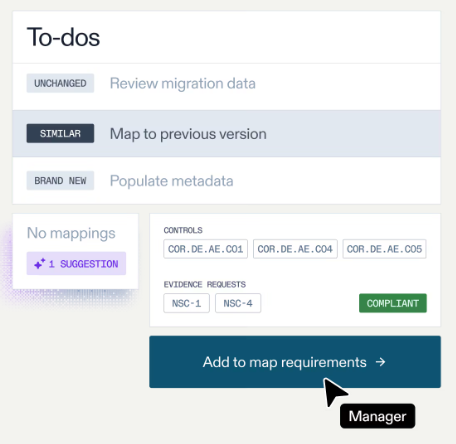
In practice, this means fewer manual hours, shorter audit cycles, and lower costs. Many AuditBoard reviews highlight that the AI "just works," handling busywork behind the scenes.
Compared to traditional tools, automation-first platforms like AuditBoard perform better in any compliance cost comparison - faster audits, less effort, and fewer mistakes.
Frameworks, Integrations, and Ecosystem
AuditBoard's ecosystem is wide and connected.
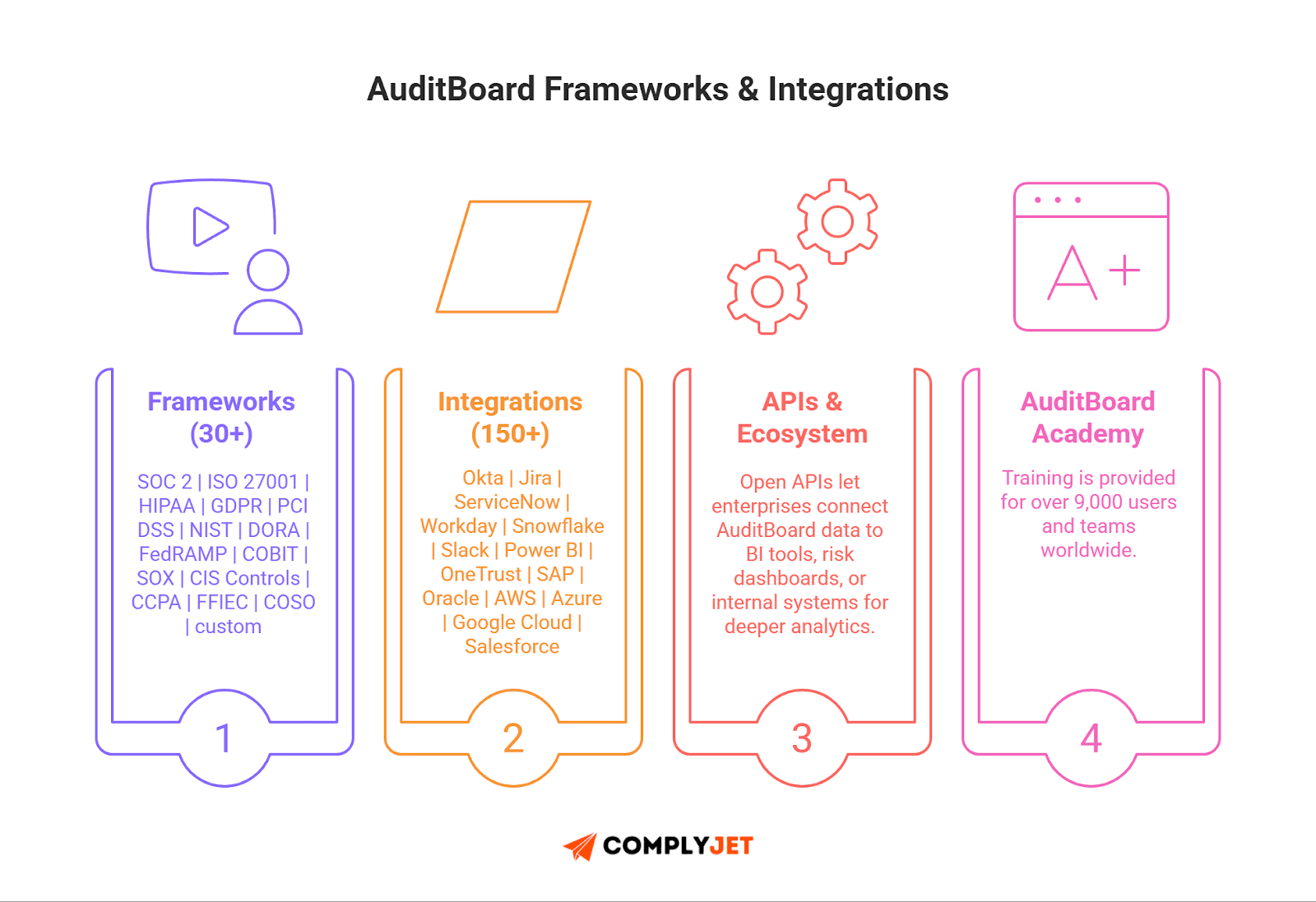
- Framework Coverage: Supports 30+ frameworks, including SOC 2, ISO 27001, PCI DSS, HIPAA, GDPR, NIST, and DORA.
- AuditBoard Sync: Keeps frameworks, risks, and audits linked - update one control, and it updates everywhere.
- Integrations: Works with more than 150 enterprise systems like Okta, Jira, ServiceNow, Workday, and Snowflake for automated testing and reporting.
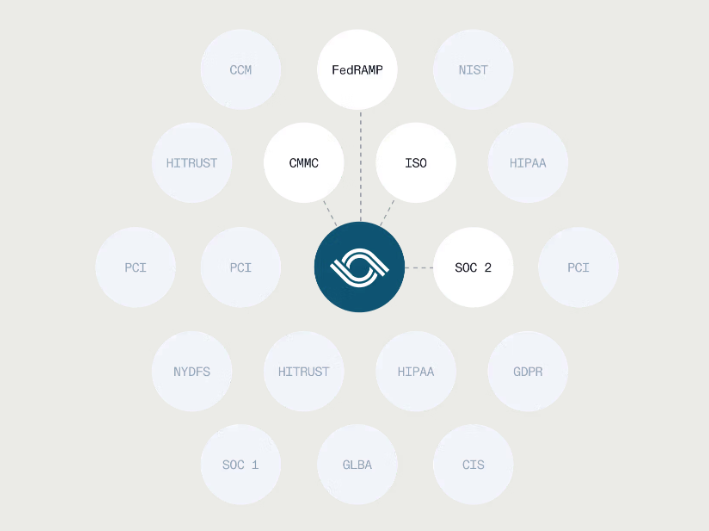
- Open APIs: Let teams push data into BI tools or internal dashboards.
- Third-Party Risk Management: Automates vendor assessments, tracks responses, and maps supplier risk into overall compliance posture.
- AuditBoard Academy: Offers training and certifications for 9,000+ users, helping teams grow compliance expertise.
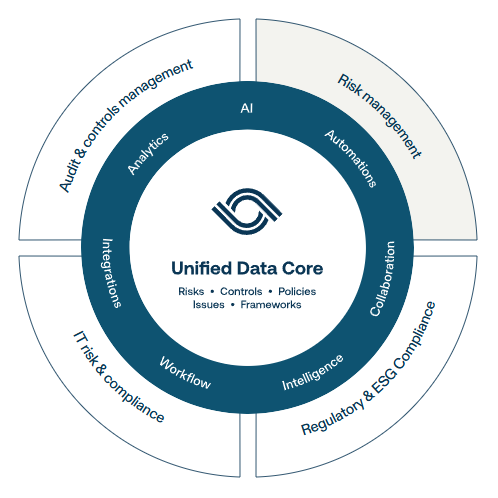
AuditBoard creates a live network of audit and risk data. The high AuditBoard pricing figures reflect the breadth of frameworks, support, and integrations included.
AuditBoard Pricing and Implementation
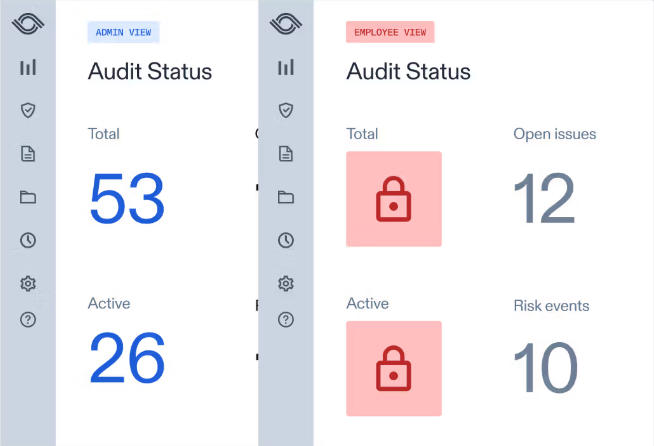
Here's the reality behind AuditBoard pricing:
- No public pricing: Everything starts with a demo and quote.
- Market data says:
- Vendr: Median annual spend - $42,775 (range: $20K-$88K)
- TrustRadius: Mid-sized plans - $30K-$50K per year
- Reddit (verified buyer): $150K first year, $120K annual renewals (with implementation)

- Setup time: About four months, according to G2 users. Complex, multi-framework setups take longer.
- Includes: Access to AuditBoard's onboarding, training, and success teams - part of what drives the higher price.
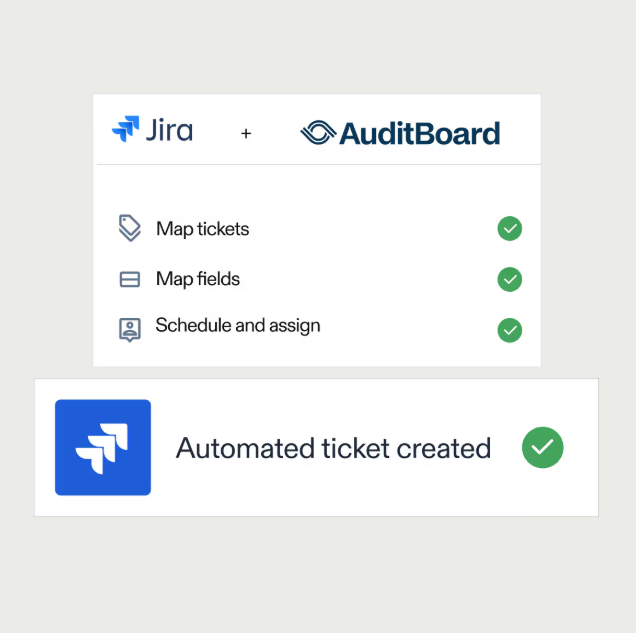
In broader compliance cost comparison studies, total spend can exceed what startups pay for their entire compliance tech stack. AuditBoard isn't overpriced - it's enterprise-grade.
If you want transparency, ComplyJet lists every plan and feature online. No demos. No surprises. Just clear, upfront pricing and a setup measured in days, not months.
Self-Reported ROI and Result Claims

AuditBoard's reported results are bold - though self-reported. So take them with a grain of salt. Here's a snapshot:
AuditBoard was also named a Leader in Gartner's 2025 Magic Quadrant™ for GRC Tools, confirming its enterprise strength.

Still, these numbers come from internal studies, not independent research. Real-world results depend on adoption and scale. AuditBoard reviews on G2 echo this - praising visibility and reporting, but noting the setup effort required.
For companies managing multiple frameworks, the ROI aligns with the AuditBoard pricing tier. For smaller teams, it may exceed what's necessary.
AuditBoard Reviews by Real Users
This summary combines feedback from G2 reviews, Capterra, and Reddit.
What users like

- Centralized risk, audit, and compliance tracking.
- Intuitive interface that's easy for non-technical users.
- Helpful onboarding and support teams.
- Real-time dashboards that improve visibility.
- Faster audits once automation is configured.
What users dislike
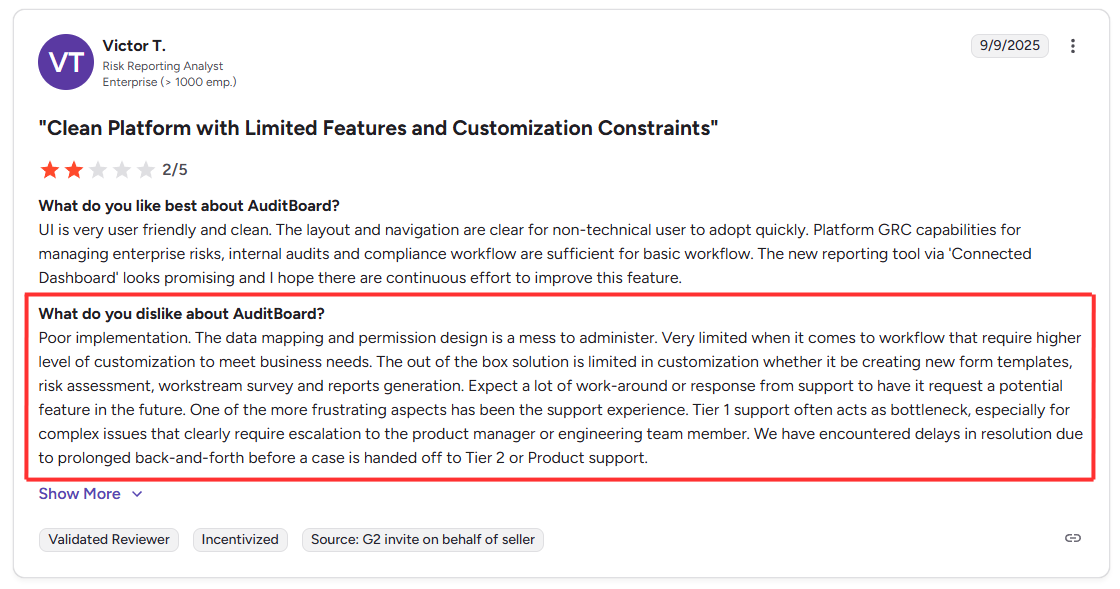
- Limited customization in reports and dashboards.
- Setup and control mapping can be time-intensive.
- Advanced configuration requires support assistance.
- Performance slows during large data uploads.
- Cost makes it more suitable for enterprises than startups.
Overall, AuditBoard reviews agree - the tool is reliable and feature-rich but best for mature compliance teams.
For fast-moving startups, ComplyJet offers similar automation and reporting - without the enterprise overhead. Transparent pricing, quick onboarding, and a leaner build.
Top AuditBoard Alternatives in 2025
AuditBoard leads the enterprise GRC market, but it's not the only player. Founders often compare it with Vanta, Drata, and Secureframe - the top AuditBoard alternatives in 2025.
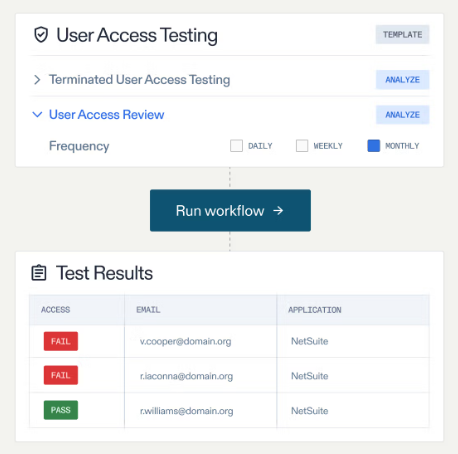
Here's how they stack up:
For founders chasing SOC 2 without the enterprise weight and months worth of wait, ComplyJet offers similar automation in just as less as 7 days. Open pricing and founder access from day one are just cherry on top.
FAQs: Founders' Most Asked Questions
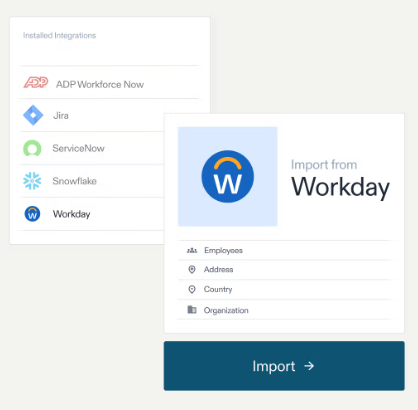
Does AuditBoard have a free trial?
No. AuditBoard doesn't offer a free trial. You can access it only after a sales call. Many AuditBoard reviews say the setup feels personal but limits hands-on testing before buying.
How much does AuditBoard cost?
AuditBoard pricing starts around $30,000 a year and can go up to $80,000 or more. Large companies with many frameworks may pay over $100,000. Some AuditBoard reviews say it's pricey but worth it for strong compliance automation.

What frameworks does AuditBoard support?
AuditBoard supports SOC 2, ISO 27001, HIPAA, PCI DSS, GDPR, NIST, DORA, and over 30 more. It's built for teams that manage many frameworks in one place. If pricing feels high, you can check AuditBoard alternatives that offer similar tools.
How long does it take to implement?
Setup takes about four months, based on user reviews. The process covers setup, integrations, and training. Most AuditBoard reviews say the support team helps make the rollout smooth.
Is AuditBoard AI secure?
Yes. AuditBoard AI runs on Microsoft Azure, known for strong security. Users say they trust its AI for faster, safer compliance work.
The Final Takeaway
AuditBoard is one of the most established GRC platforms available today. It brings structure, scale, and automation to complex audit and risk environments.
Still, AuditBoard reviews reveal that the platform's power comes with trade-offs - higher cost, longer onboarding, and less flexibility for smaller teams.

The question isn't whether AuditBoard is good; it's whether it fits your stage.
For startups that want compliance without the enterprise weight, ComplyJet is a simpler choice. You can talk directly to the founders, get SOC 2 ready in seven days, and see transparent pricing upfront - no calls, no surprises.
If you're ready to move fast, book the ComplyJet free trial and see how easy compliance can be when it's built for founders, not corporations.



